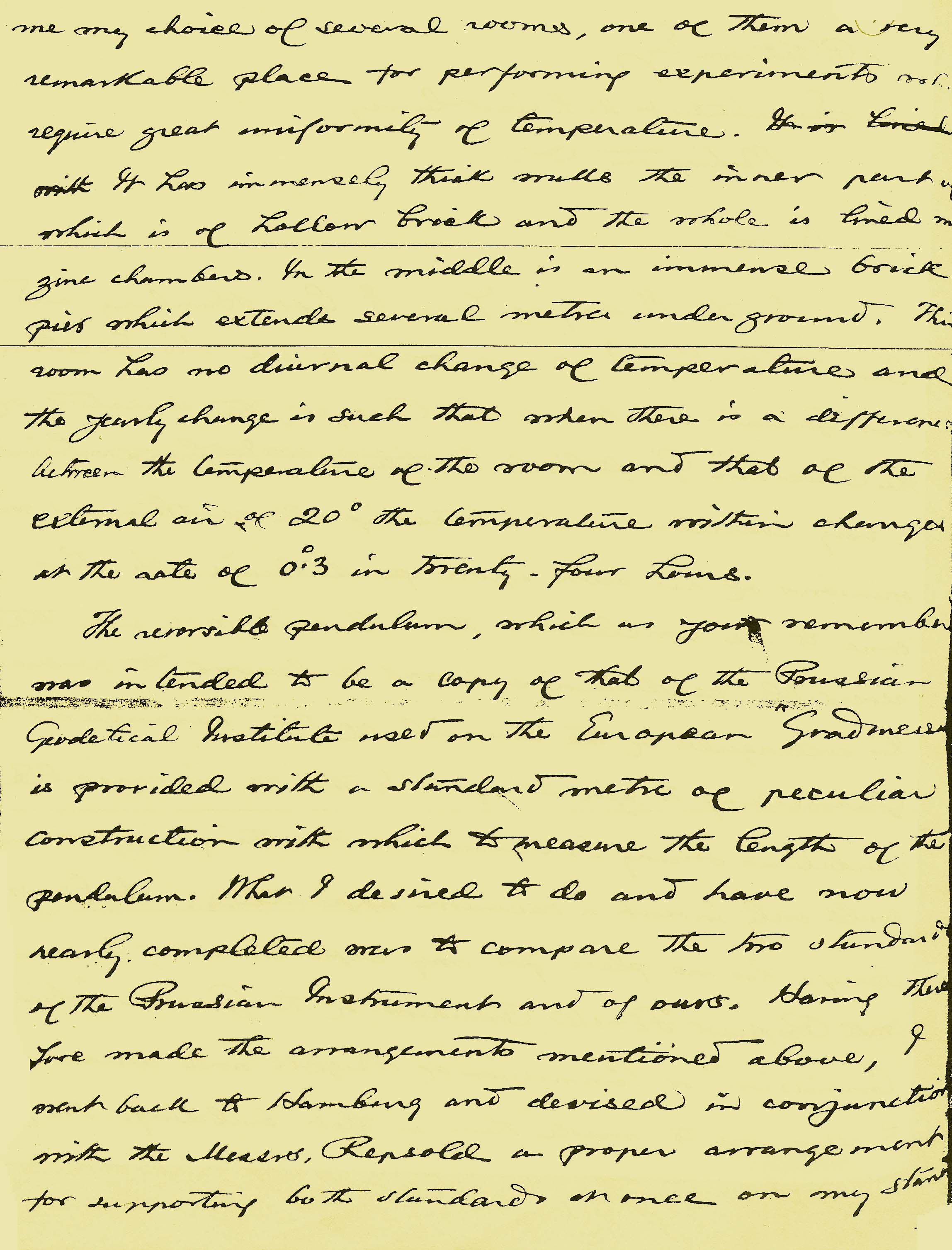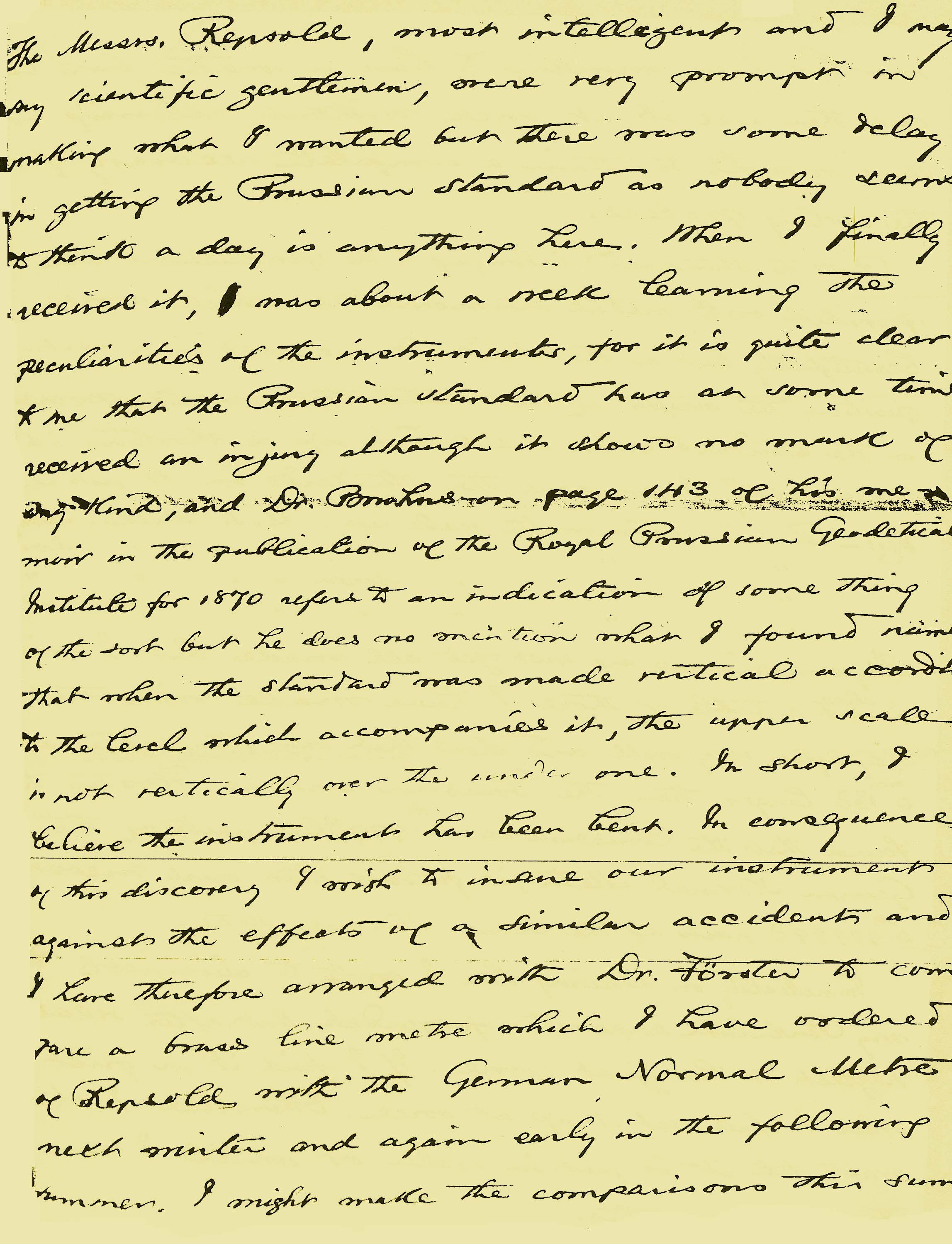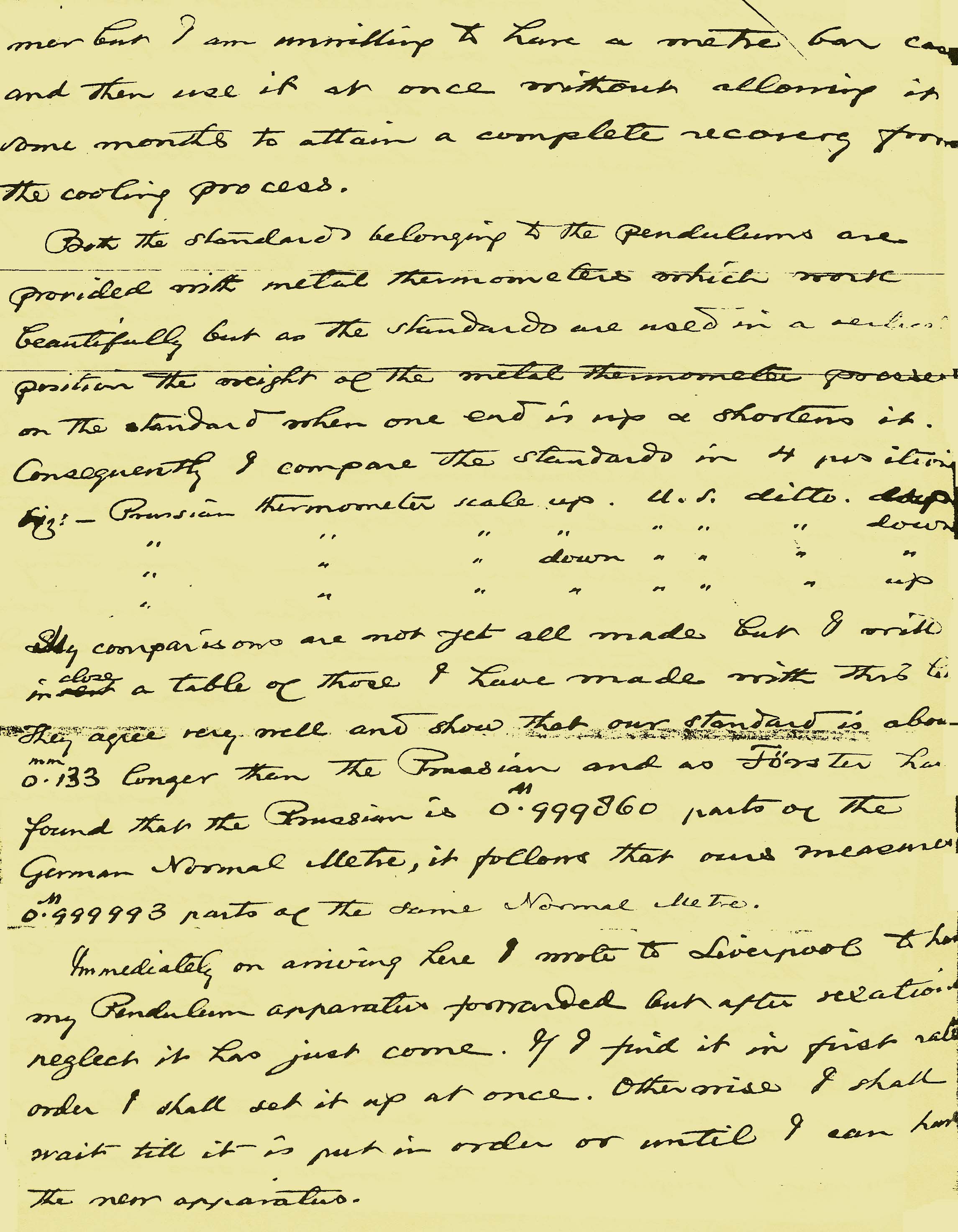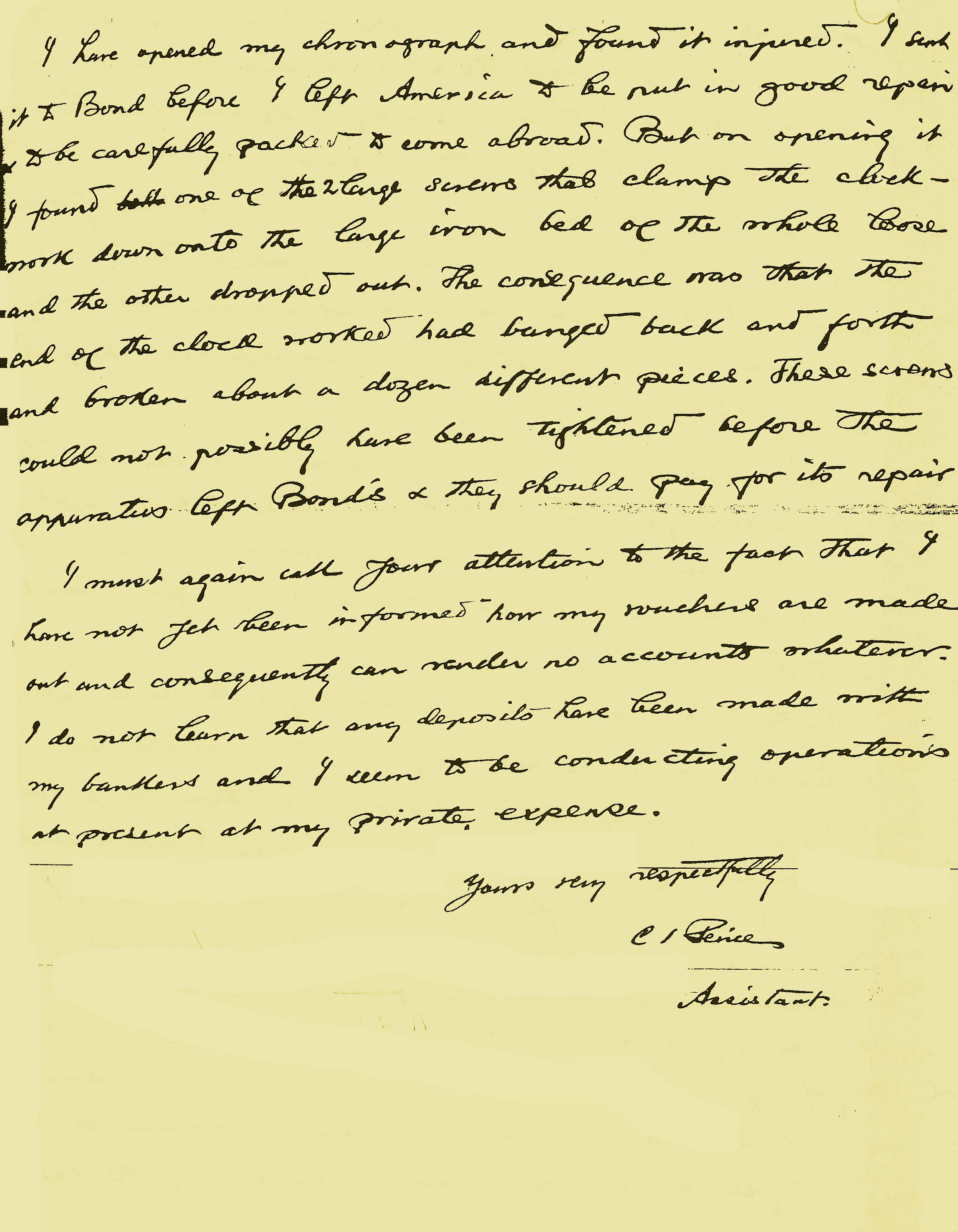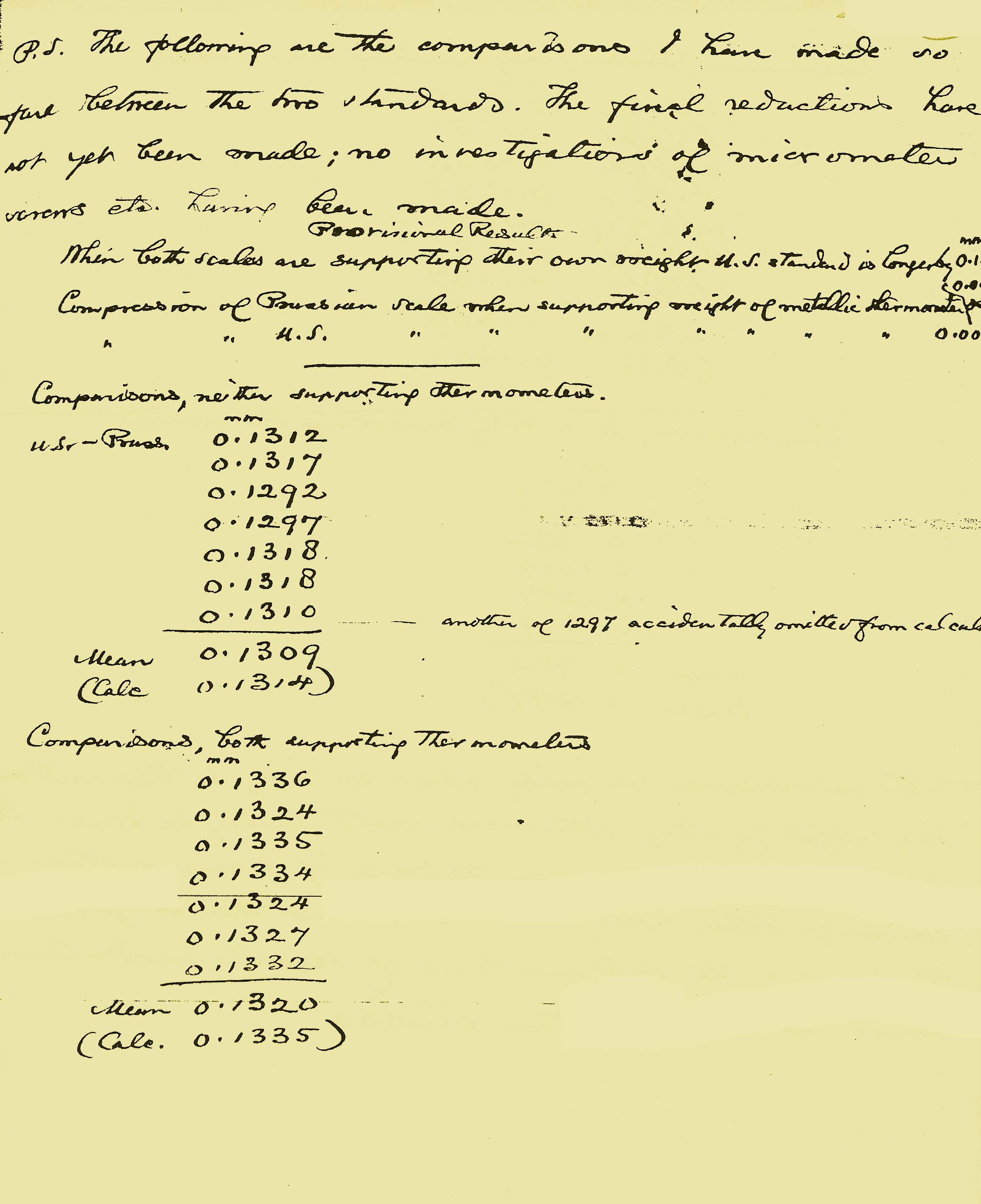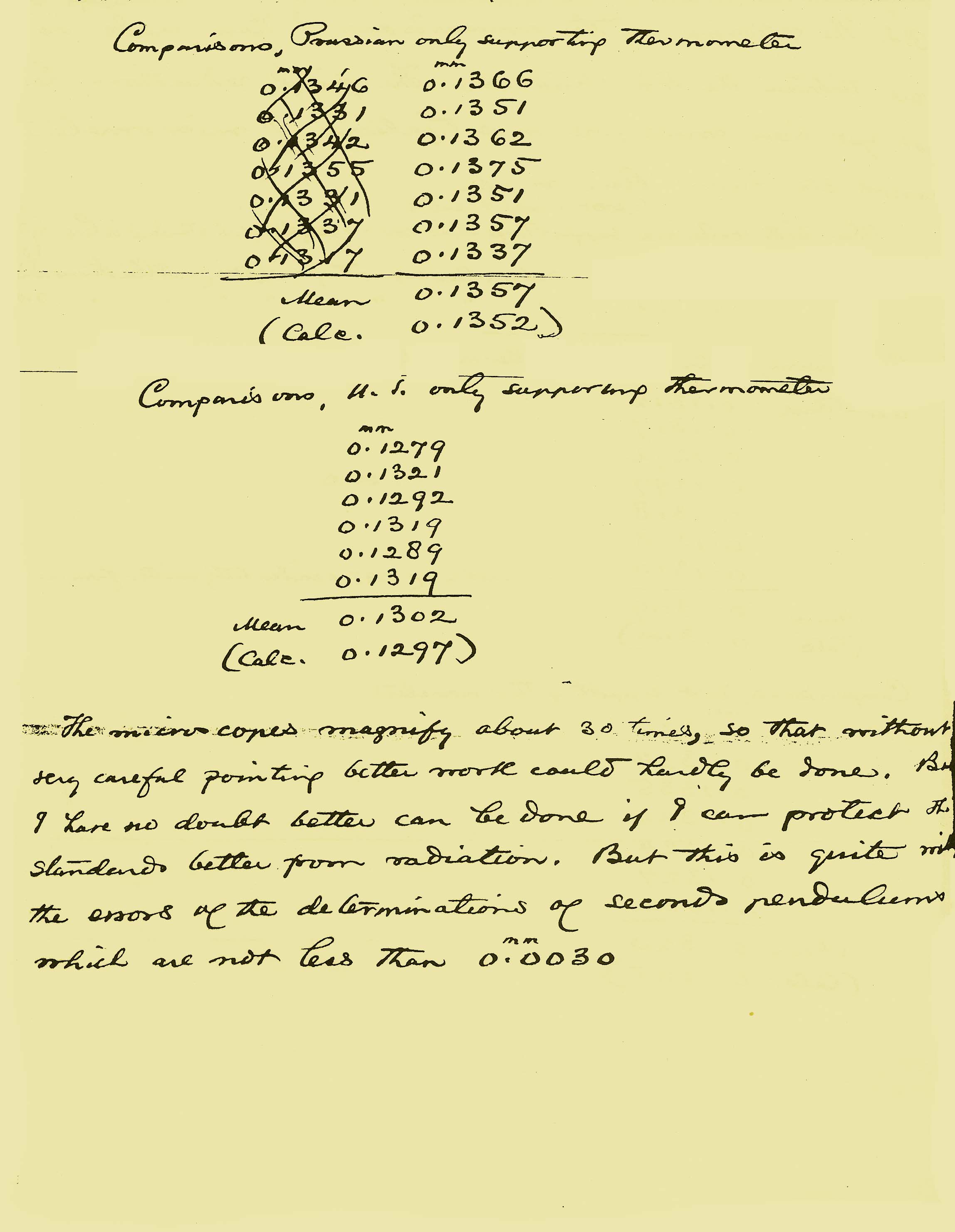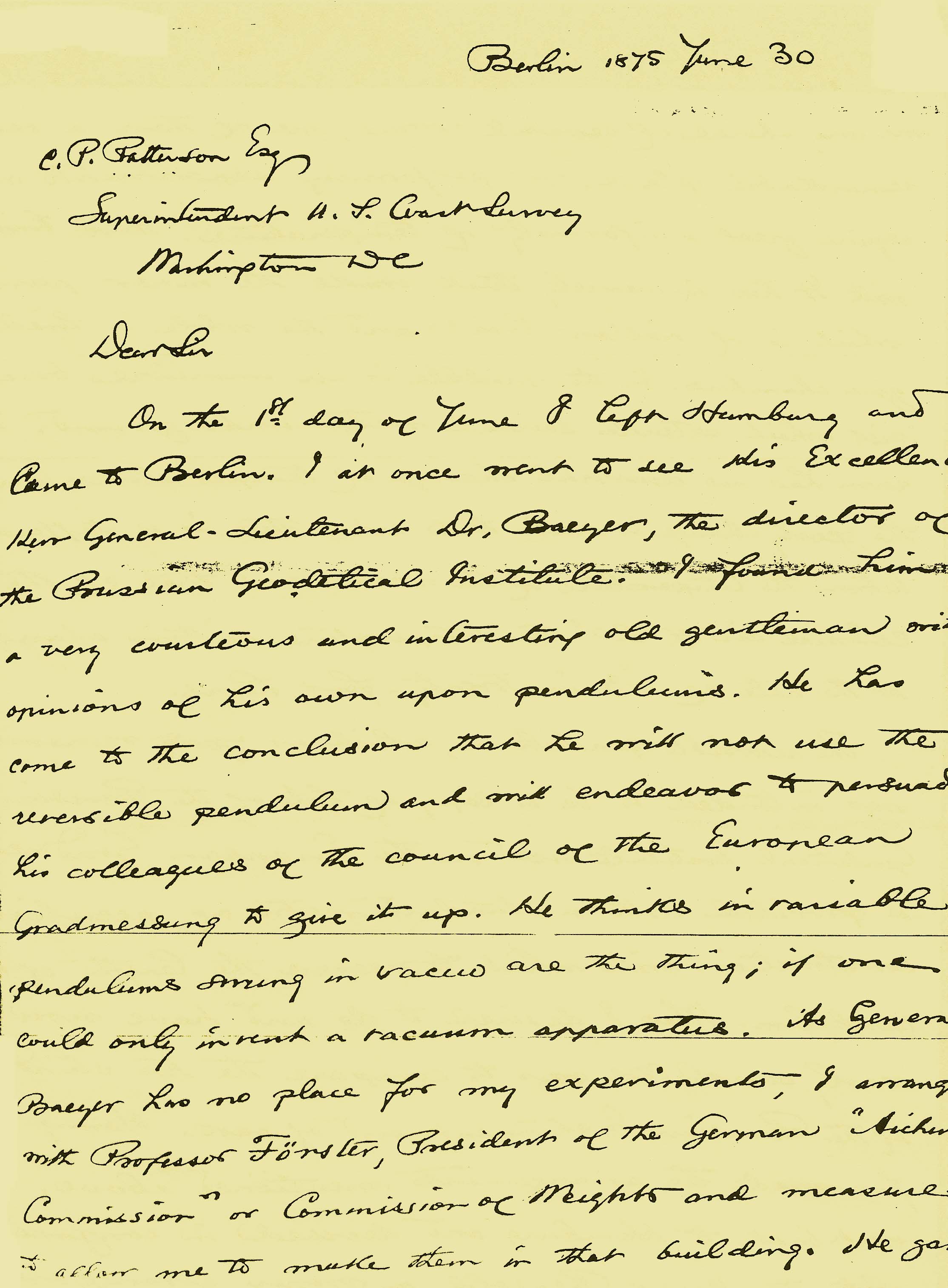
|
Berlin 1875 June 30
On the 1st day of June I left Hamburg and came to Berlin. I at once went to see His Excellency Herr General-Lieutenant Dr. Baeyer, the director of the Prussian Geodetical Institute. I found him a very courteous and interesting old gentleman with opinions of his own upon pendulums. He has come to the conclusion that he will not use the reversible pendulum and will endeavor to persuade his colleagues of the council of the European Gradmessung to give it up. He thinks invariable pendulums swung in vacuo are the thing; if one could only invent a vacuum apparatus. As General Baeyer has no place for my experiments, I arranged with Professor Förster, President of the German "Aichungs Commission" or Commission of Weights and measures to allow me to make them in that building. He gave
|
